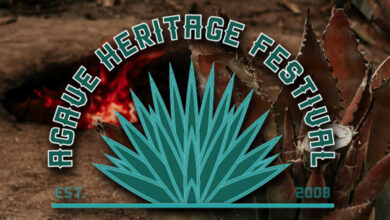
Tucson – A City of Wellness
By Donna Kreutz
Throughout history, humans have gravitated to Southern Arizona for a better life.
The area’s richly diverse environment attracted plentiful wildlife which, in turn, attracted a migration of hunters from the frozen north some 10,000+ years ago. Evidence of these ancestors – the hunters’ stone tools – were discovered on a ranch site now known as the Lehner Mammoth-Kill Site near Sierra Vista.
The people of this land also used a wide variety of wild plants for healing, and have continuously cultivated crops with traditional farming and irrigation systems.
The dry climate has long proved beneficial for health. The first tuberculosis sanitarium in Tucson opened around 1920 and more followed over the decades. A national television ad in the 1950s urged people with nasal congestion to “send their sinuses to Arizona.” National parks and dude ranches soon dotted the state, promoting outdoor experiences in ecosystems as varied as deserts, canyons and pine forests.
In the early 1970s, health visionary Dr. Andrew Weil introduced mainstream medicine to an integrative healthcare approach. In 1979, Mel and Enid Zuckerman founded Canyon Ranch to re-introduce healthy habits to those who overindulged – bringing the life-changing spa experience to men as well as women. Dr. Thomas Grogan relentlessly pursued a diagnostic tool that revolutionized cancer care and in 1985 founded Ventana Medical Systems (now Roche Tissue Diagnostics), which then attracted other bioscience companies.
While Weil changed medicine, the Zuckermans changed the spa industry. Their respective philanthropies helped establish the University of Arizona Andrew Weil Center for Integrative Medicine and the University of Arizona Mel and Enid Zuckerman College of Public Health. Their leadership energized the local wellness movement – from Pilates, tai chi, acupuncture, massage and herbal treatments, to a massage school and even yoga classes on a rooftop downtown and in a brewery.
In 1983, cycling fanatic Richard DeBernardis established El Tour de Tucson, which annually attracts thousands of cyclists from around the globe. Floods from that same year eventually would lead to the construction of The Loop, a landmark 131-mile multi-use trail for cyclists, pedestrians, joggers, equestrians and tourists, which opened in 2018. The nonprofit Native Seeds/SEARCH also began conserving the rich agro-biodiversity of the arid Southwest back in 1983. The seed bank today has nearly 2,000 varieties of crops adapted to arid landscapes.
In 1993 Kyria Sabin Waugaman opened Body Works Studio here, then expanded the Fletcher Pilates program to major cities on five continents.
By 1995, Western horseback riding segued into “equine therapy” at Miraval Arizona and “therapeutic riding” for kids and adults at nonprofits TROT and TRAK. This year, the Tucson Jewish Community Center expanded its focus on fitness and introduced its 14-spoke “Wheel of Wellness” program.
Little wonder that the University of Arizona became a mecca for biosciences and medicine – or that Southern Arizona became known as a health haven and Tucson as the City of Wellness.
This report spotlights some of the region’s health-conscious assets.





